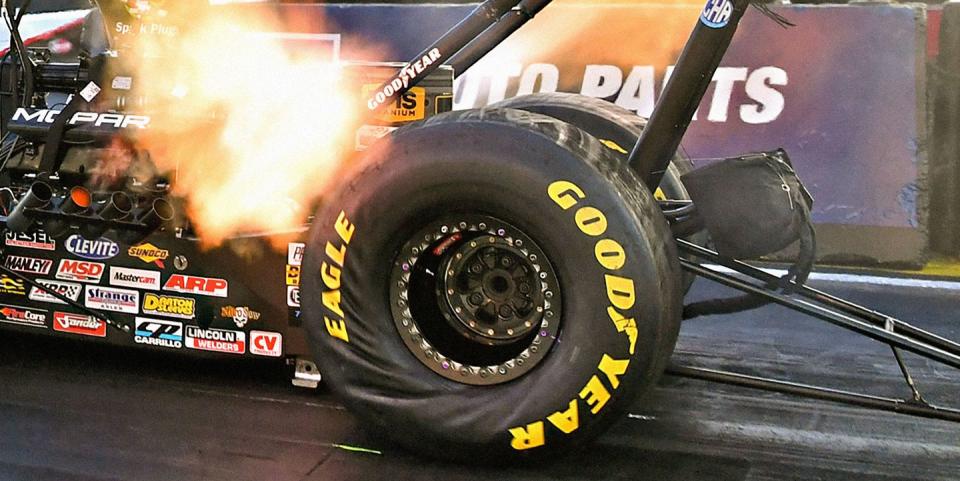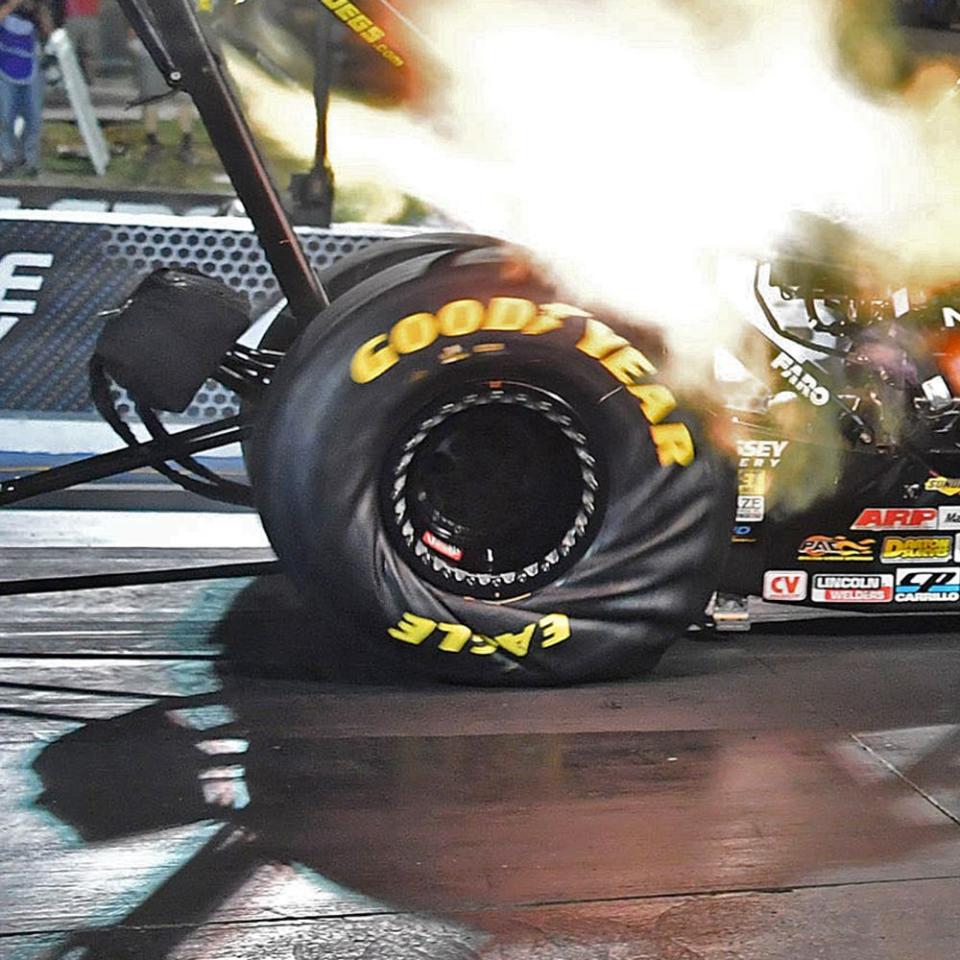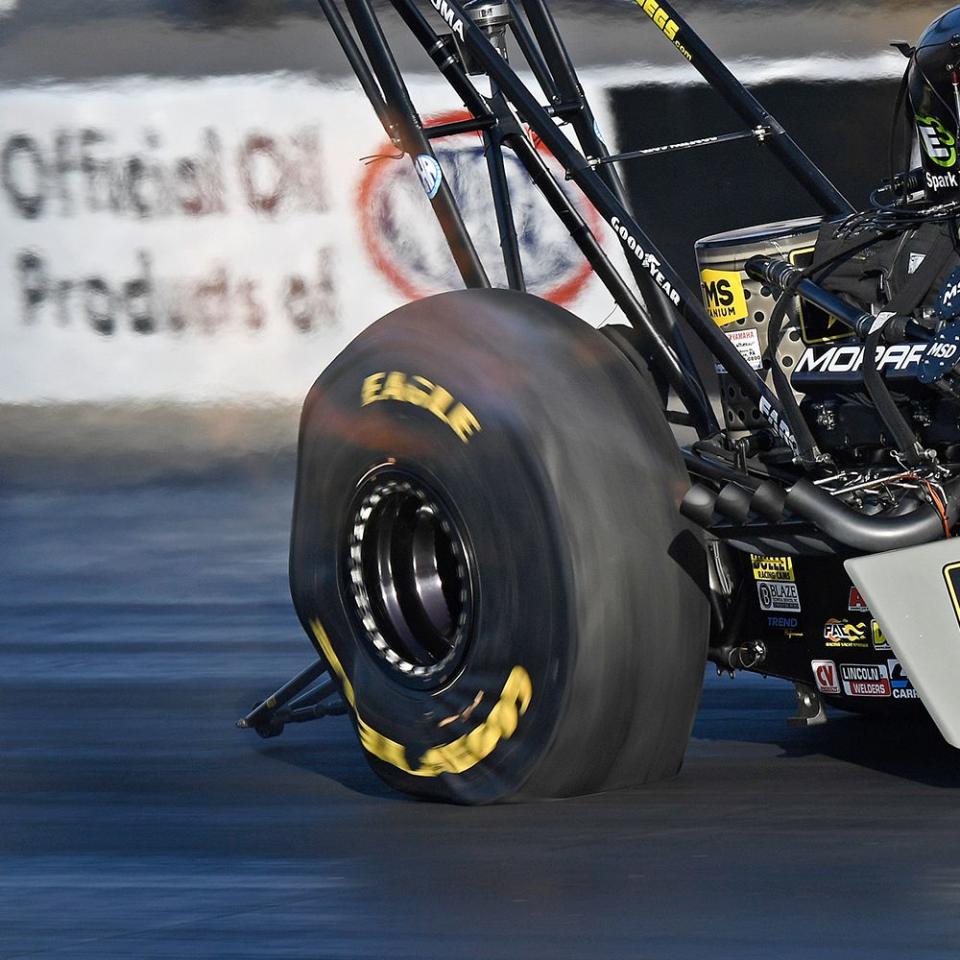We Break down the Physics of Dragster Tires

Think of an NHRA Top Fuel dragster as one big mechanical computer. Every element is engineered to act in a predictable way and predictable order to turn 15 to 20 gallons of nitromethane fuel into 11,000 horsepower and a 3.7-second, 335-mph 1000-foot run. And all that power and logic are delivered through a pair of bias-ply drag slicks manufactured in Akron, Ohio. Thirty-six inches tall, 17.5 inches wide, and weighing 48 pounds apiece, they're part number 2747 in the Goodyear Racing catalog, $917 per tire. Each one is expected to last eight runs, or a bit more than 1.5 miles.
The insights here are largely drawn from racing engineer Chuck Hallum's SAE paper, "The Magic of the Drag Tire." The story starts after a burnout to heat the tires' rubber and the full-power run begins.

The Squat
The massive torque channeled through the rear axle shifts the load of the car rearward and tries to twist the tire on its 16-inch beadlock rim. The sidewalls wrinkle as the tire-generally running between 6.0 and 10.0 psi of pressure-shrinks in radius by more than six inches and the tread effectively balls up at the front of the contact patch. That compression of the tire expands the contact patch to almost 250 square inches-larger than two side-by-side sheets of 8.5-by-11-inch paper. The compression of the tire also means that the final-drive ratio is effectively shortened for a harder launch. By the time the tire has released the torque stored in its wrinkled sidewalls and tread and grown back to its original size, the Top Fueler is already pulling more than 4.00 g's of acceleration.

The Growth
After the car launches, inertia grows the tire to as much as 38 inches in diameter, simultaneously lengthening and narrowing the contact patch. This effectively lets the final-drive ratio grow taller for higher speeds and reduces rolling resistance as the vehicle hits terminal velocity.
The End
As the dragster finishes its run, the engine is shut down and its compression helps brake the machine. The rear tires distort again as the car slows, sometimes developing flat spots at their trailing edges. But those big parachutes do most of the work at this point.
Only Top Fuel dragsters and Funny Cars have the massive torque to effectively use and abuse such huge rear tires this way. It's glorious. And after all this glory, what happens to the tires? Some, er, retire into less stressful work in slower classes. And others get turned into "draggers." These are pulled up and down the track between runs to coat the surface with a layer of rubber for improved grip.
From the February 2019 issue
('You Might Also Like',)

 Yahoo Autos
Yahoo Autos 